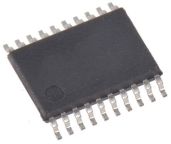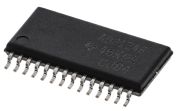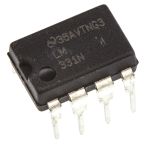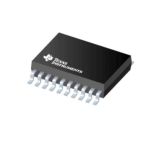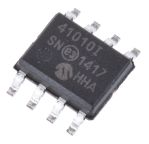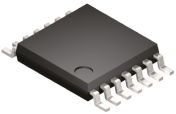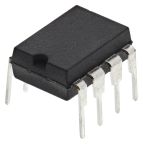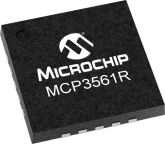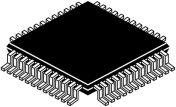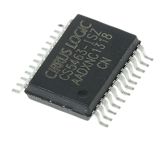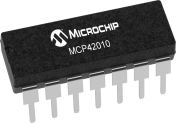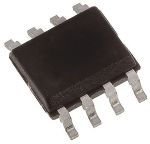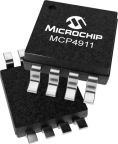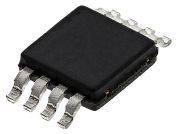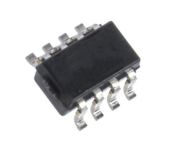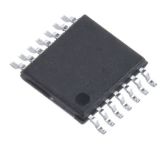1767 Producten voor Data Converters
Laatste voorraad RS
- RS-stocknr. 190-5349
- Fabrikantnummer DS3930E+
- Merk Maxim Integrated
- Resistance Value 19.8kΩ
- Number of Positions 256
- Taper Type Linear
- Memory Type Non-Volatile
Per stuk (in een verpakking 5)
€ 6,564(excl. BTW)
Op voorraad
- RS-stocknr. 709-1921
- Fabrikantnummer ADS1248IPW
- Merk Texas Instruments
- Architecture Delta Sigma
- Number of ADCs 8
- Resolution 24-bit
- Sampling Rate 2ksps
Per stuk
€ 14,46(excl. BTW)
Op voorraad
- RS-stocknr. 533-5755
- Fabrikantnummer LM331N/NOPB
- Merk Texas Instruments
- Converter Function VFC
- Full Scale Frequency 100kHz
- Linearity Error ±0.14%FSR
- Power Supply Type Single
Per stuk
€ 5,02(excl. BTW)
Op voorraad
- RS-stocknr. 197-7088P
- Fabrikantnummer ADS1247IPW
- Merk Texas Instruments
- Number of ADCs 4
- Resolution 24 bit
- Sampling Rate 2ksps
- Input Signal Type Differential, Single Ended
Per stuk (geleverd in een tube)
€ 11,10(excl. BTW)
Op voorraad
- RS-stocknr. 628-3762
- Fabrikantnummer MCP41010-I/SN
- Merk Microchip
- Control Interface Serial-SPI
- Resistance Value 10kΩ
- Number of Positions 256
- Taper Type Linear
Per stuk (in een verpakking 5)
€ 1,668(excl. BTW)
Op voorraad
- RS-stocknr. 709-4645P
- Fabrikantnummer ADS1255IDBT
- Merk Texas Instruments
- Architecture Delta Sigma
- Number of ADCs 2
- Resolution 24-bit
- Sampling Rate 30ksps
Per stuk (geleverd op een wiel)
€ 15,90(excl. BTW)
Beperkte voorraad
- RS-stocknr. 799-0240
- Fabrikantnummer MCP41HV51-103E/ST
- Merk Microchip
- Control Interface Serial-SPI
- Resistance Value 10kΩ
- Number of Positions 256
- Memory Type Volatile
Per stuk (in een verpakking 4)
€ 1,80(excl. BTW)
Laatste voorraad RS
- RS-stocknr. 724-0123
- Fabrikantnummer MCP4152-502E/SN
- Merk Microchip
- Control Interface Serial-SPI
- Resistance Value 5kΩ
- Number of Positions 257
- Taper Type Linear
Per stuk (in een verpakking 2)
€ 1,05(excl. BTW)
Op voorraad
- RS-stocknr. 146-0165
- Fabrikantnummer MCP4911-E/P
- Merk Microchip
- Architecture Resistor String
- Resolution 10 bit
- Full Scale Error 1%FSR
- Integral Nonlinearity Error 3.5LSB
Per stuk (in een tube 60)
€ 1,44(excl. BTW)
Laatste voorraad RS
- RS-stocknr. 545-5118
- Fabrikantnummer LTC1096CN8#PBF
- Merk Linear Technology
- Architecture SAR
- Number of ADCs 1
- Resolution 8-bit
- Sampling Rate 33ksps
Per stuk
€ 3,87(excl. BTW)
Tijdelijk niet op voorraad
- RS-stocknr. 215-8002
- Fabrikantnummer MCP3562RT-E/NC
- Merk Microchip
- Resolution 24 bit
- Sampling Rate 153.6ksps
- Mounting Type Surface Mount
- Package Type UQFN
Per stuk (in een verpakking 2)
€ 4,045(excl. BTW)
Op voorraad
- RS-stocknr. 252-8877P
- Fabrikantnummer SN74HC244DBR
- Merk Texas Instruments
- Application General Low-Side Switch Applications, Relay Drivers, Solenoid Drivers, Unipolar Stepper Motor Drivers
- Resolution 4 bit
- Number of Channels per Chip 8
- Package Type SSOP
Per stuk (geleverd op een wiel)
€ 0,204(excl. BTW)
Op voorraad
- RS-stocknr. 662-1509
- Fabrikantnummer PCM4104PFBT
- Merk Texas Instruments
- Architecture Delta Sigma
- Resolution 24 bit
- Conversion Rate 216ksps
- Full Scale Error 0.5%FSR
Per stuk
€ 7,24(excl. BTW)
Wordt opgeheven
- RS-stocknr. 716-5873
- Fabrikantnummer CS5463-ISZ
- Merk Cirrus Logic
- Resolution 8 bit
- Mounting Type Surface Mount
- Package Type SSOP
- Pin Count 24
Per stuk
€ 2,30(excl. BTW)
Tijdelijk niet op voorraad
- RS-stocknr. 209-7663
- Fabrikantnummer MCP42010-I/SL
- Merk Microchip
- Control Interface SPI
- Resistance Value 12kΩ
- Number of Positions 2
- Taper Type Linear
Per stuk (in een verpakking 5)
€ 2,132(excl. BTW)
Op voorraad
- RS-stocknr. 921-5548
- Fabrikantnummer X9C103SIZ
- Merk Renesas Electronics
- Control Interface Serial-3 Wire
- Resistance Value 10kΩ
- Number of Positions 100
- Taper Type Linear
Per stuk (in een verpakking 2)
€ 6,49(excl. BTW)
Op voorraad
- RS-stocknr. 649-555
- Fabrikantnummer MCP4911-E/MS
- Merk Microchip
- Architecture R-2R
- Resolution 10
- Conversion Rate 100ksps
- Full Scale Error 2LSB
Per stuk (in een verpakking 2)
€ 1,645(excl. BTW)
Laatste voorraad RS
- RS-stocknr. 523-8418
- Fabrikantnummer AD5310BRMZ
- Merk Analog Devices
- Architecture Resistor String
- Resolution 10 bit
- Conversion Rate 167ksps
- Full Scale Error -1.25%FSR
Per stuk
€ 7,58(excl. BTW)
Laatste voorraad RS
- RS-stocknr. 190-5355
- Fabrikantnummer MAX5474EKA+T
- Merk Maxim Integrated
- Control Interface 3-Wire Up/Down
- Resistance Value 50kΩ
- Number of Positions 32
- Taper Type Linear
Per stuk (in een verpakking 5)
€ 2,46(excl. BTW)
Laatste voorraad RS
- RS-stocknr. 190-5375
- Fabrikantnummer MAX5482EUD+
- Merk Maxim Integrated
- Resistance Value 50kΩ
- Number of Positions 1024
- Taper Type Linear
- Memory Type Non-Volatile
Per stuk (in een verpakking 5)
€ 2,794(excl. BTW)










